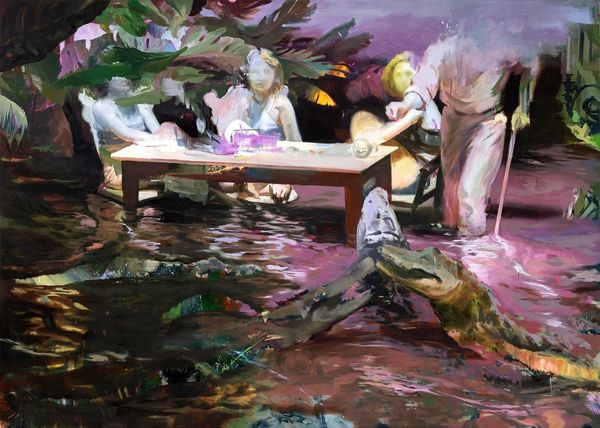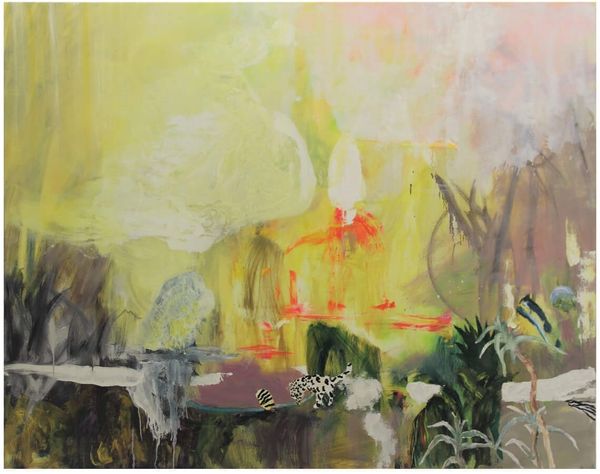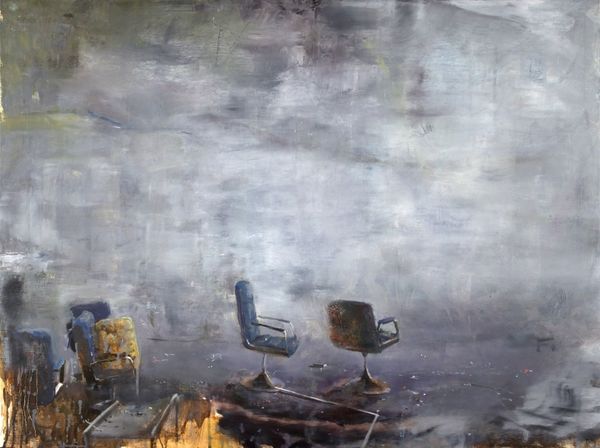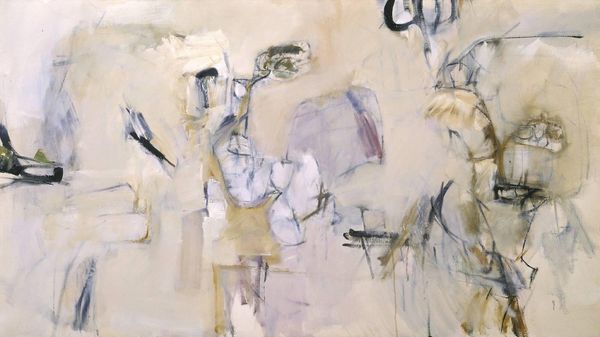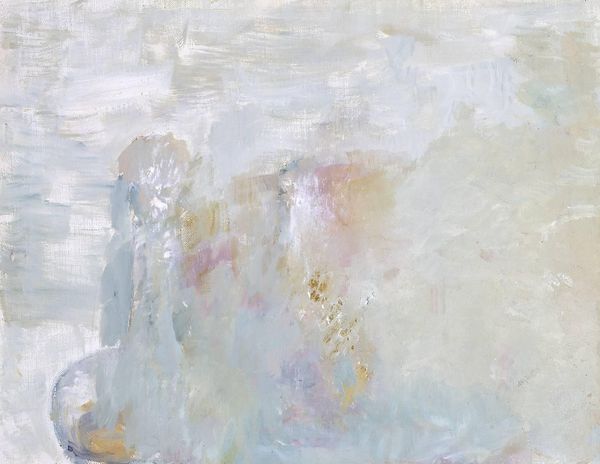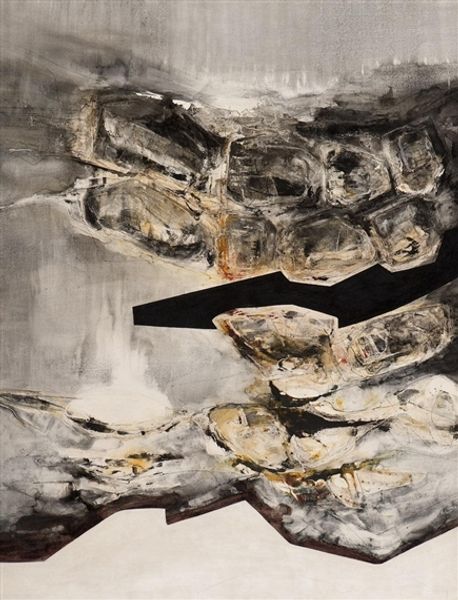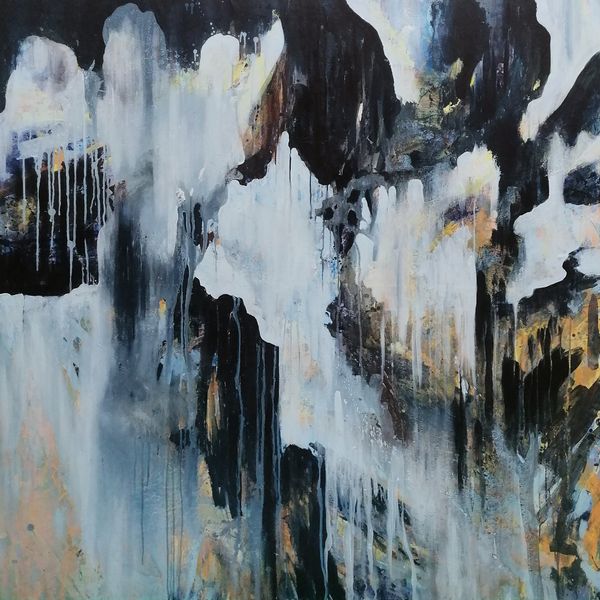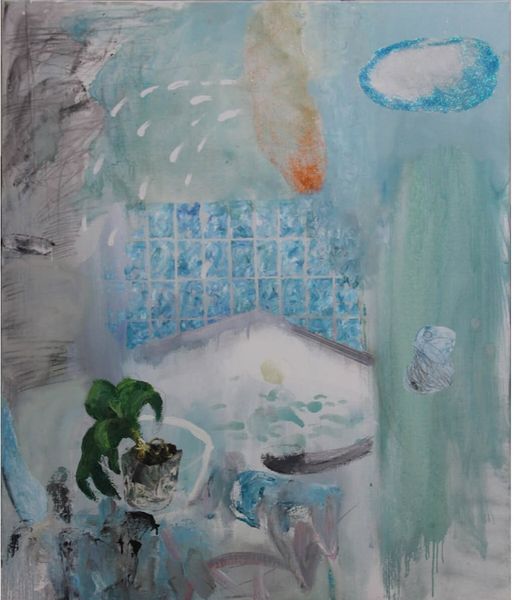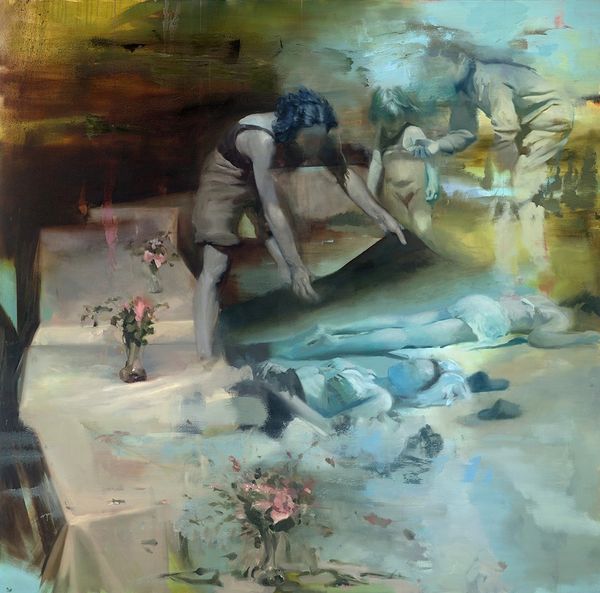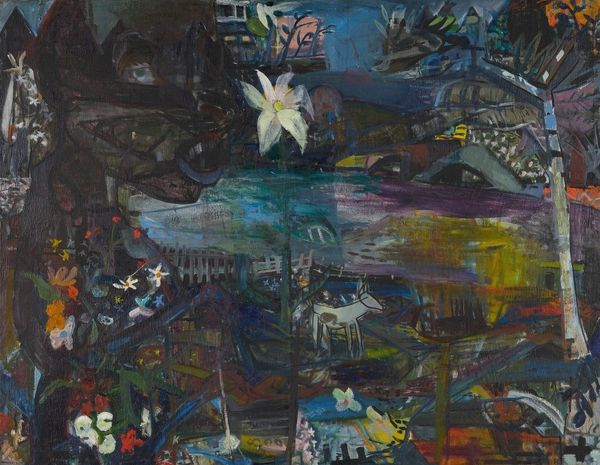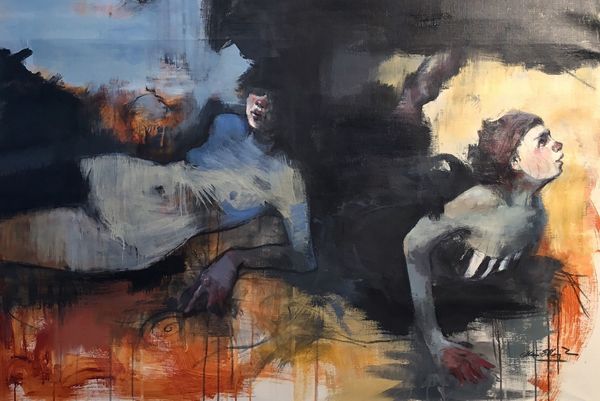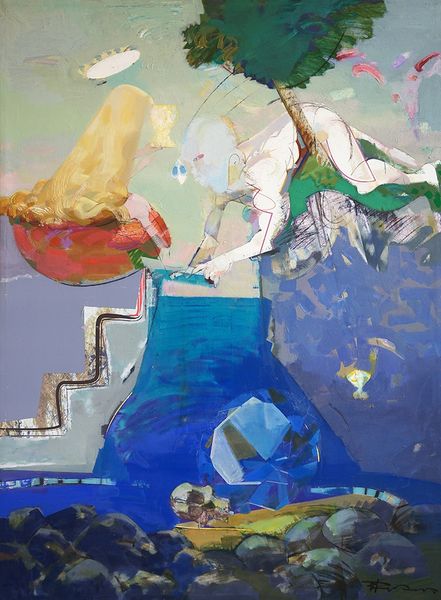
Copyright: Modern Artists: Artvee
Editor: This is "The Reading Room" by Joshua Flint, created in 2018 using mixed media and oil paint with an impasto technique. The composition creates a slightly unsettling yet serene atmosphere. What underlying themes do you think the artist is exploring here? Curator: That unsettling serenity you mention is key. Flint often presents narratives that question our perception of reality, doesn't he? I wonder about the ghostly figures juxtaposed against the more solid room. Do they represent suppressed histories, marginalized voices that haunt our present spaces? How do the visual choices made by Flint comment on intersectional feminism and our increasingly gendered and racialized existence? Editor: The ghost-like figures definitely stand out. Their lack of clear identity is a sharp contrast with the specific interior space. Are you suggesting the space is somehow defined or even threatened by their presence? Curator: Perhaps the space isn’t threatened but complicated. Think about how domestic spaces are historically gendered. Are these figures specters of domesticity, of expected female roles? Are we meant to consider what isn’t represented – who is missing from this ‘reading room’ and why? How does the reading room become a stage upon which women were once expected to preform, to ‘read’, to create, while under watch? Editor: So you're positioning this as a commentary on the role of women in domestic spaces throughout history? I didn’t initially see it that way. Curator: It's one possible reading, amongst many. How does the use of impasto—the thick application of paint—contribute to this reading, if at all? Is it obscuring or revealing some kind of truth about gender performativity in private spaces? How do you see abstraction influencing the narrative being displayed? Editor: That makes me consider the techniques in a new light; the style amplifies that uncertain or unfixed narrative and creates questions that resonate on social levels. Thanks! Curator: Absolutely! Recognizing how these historical and social dimensions interweave to affect an art narrative truly deepens our perspective and our engagement with contemporary dialogue.
Comments
No comments
Be the first to comment and join the conversation on the ultimate creative platform.
